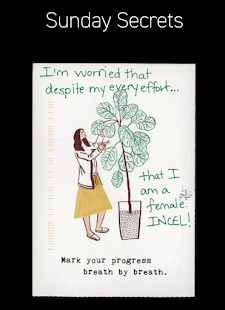Kinetic and Interactive Poetry - Cam
In Chapter Five of Scott Rettberg's Electronic Literature, the genres of kinetic and interactive poetry were introduced. Similarly to the categories of electronic literature that have been elaborated upon in the previous chapters, kinetic poetry, in itself, is a large, primary genre that houses a conglomerate of other e-lit sub-genres. Scott Rettberg cites Chris Funkhouser's analysis of digital poetry, stating, "Chris Funkhouser describes digital poetry as 'not a singular 'form' but rather a conglomeration of forms that now constitutes a genre even though the creative activity itself - in terms of its media, methods, and expressive intent - contains heterogeneous components.' He asserts that a 'poem is a digital poem if computer programming or processes (software, etc.) are distinctively used in the composition, generation, or presentation of the text'" (Rettberg 118). One of the most interesting components of kinetic poetry is the usage of time and space/motion. When thinking about electronic literature, it's not likely that space and time would cross your mind as being crucial to the genre, but the electronic component of the bodies of work render time and space as extremely important to the project's existence. Rettberg describes their importance within the kinetic poetry genre, saying, "Kinetic poetry by definition deals in time-based poetics: its main distinctive characteristic is that texts change through animation, and that animation itself conducts meaning" (Rettberg 119). Animation, whether through videos or through text transitions, help to create metaphor within the story. Learning more about HyperCard not only educated me further within the scope of kinetic and interactive poetry, but within electronic literature and the technology used to create it as a whole. HyperCard was created by Apple in the last '80s and was one of the primary components of Mac devices during this period of time. While it had a more database-oriented interface, HyperCard offered many graphical flexibilities that other software didn't at this time. Apple abandoned HyperCard in 2004, but the features it contained are still prevalent within many applications that Apple and other software companies support (graphics, history, etc).
When screening for a reference to look further into, I wanted to stick with the HyperCard program stratosphere, as this is where I focused a majority of my chapter analysis. The primary HyperCard reference that was elaborated on in the chapter is windsound, which is a project created by John Cayley in 1999. windsound is presented as a 23-minute QuickTime video for contemporary viewers, incorporating multi-platform integration. John Caylet described the data of this project as, "transliteral morphs from one "nodal" text to another (textual morphing based on letter replacement). The morphs were software-generated, and, in the original version, speech synthesis was "live" (Cayley 1). While Cayley could have used a different platform to create the project, Cayley ultimately decided to use HyperCard due to its extensive features and its ability to take the data and use visual graphics to enhance and manipulate the data. Rettberg described Cayley's usage of HyperCard in the chapter, saying , "HyperCard was well suited to Cayley's work at the time, primarily because of its extensibility, which enabled him to develop fairly complex scripted behaviors and run them within the HyperCard application" (Rettberg 136). windsound was the winner of the 2001 Electronic Literature Award for Poetry, and is considered a primary example of HyperCard kinetic poetry.


I liked your comments on how important time is to kinetic poetry. I like how the animation and moving text adds meaning to the poetry. It adds meaning on another level that transcends regular printed poetry. I also tried to get windsound to work but it would only play from 22 minutes into it. It wouldn't play the first 21. The last words on the page being "yet dead" was kinda spooky though!
ReplyDelete